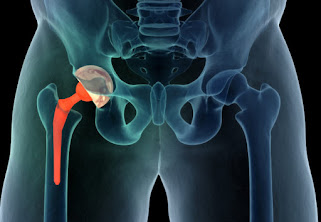The Hip Implants Market Is Growing with the Increasing Prevalence of Osteonecrosis
Hip implants are medical devices used to restore mobility and relieve pain associated with arthritis and other hip injuries or diseases, such as osteonecrosis. Therefore, with the increasing prevalence of osteonecrosis, demand for hip implants is also increasing rapidly. Osteonecrosis affects both men and women; affects people of all ages. It is most common among people in their thirties and forties. According to the National Organization for Rare Disorder (NORD), osteonecrosis usually affects people between 30 and 50 years of age; about 10,000 to 20,000 people develop osteonecrosis each year in the United States. This in turn is expected to propel the growth of the hip implants market.
Patient characteristics such as sex, age, weight, overall health, and activity level are some major factors that influence the outcome and longevity of a hip implant device. The first metallic hip replacement surgery was performed in 1940 at Columbia Hospital in Columbia by American surgeon Dr. Austin T. Moore. Moreover, due to the growing geriatric population worldwide, the demand for hip implants is also increasing, as they are prone to osteoarthritis. According to the World Health Organization (WHO), by 2050, the world's population aged 60 years and older is expected to total 2 billion, up from 900 million in 2015. This in turn is also expected to accelerate the growth of the hip implants market.
Growth of the hip implants market, in North America and the Asia Pacific, is mainly driven by the increasing prevalence of osteonecrosis, the growing geriatric population, and the increasing launches and approvals of hip implants. For example, in September 2020, Smith+Nephew received approval from the National Medical Products Administration (NMPA) in China to introduce its REDAPT System for revision total hip arthroplasty (rTHA). Moreover, in July 2020, the company launched RI Hip Navigation system, for total hip arthroplasty, to maximize accuracy and reproducibility to deliver patient-specific component alignment for surgeons when assessing individual total hip arthroplasty cases.
The total hip replacement is a very common surgery that helps reduce pain and rigidity in the hip joint. It is categorized into four segments, such as primary hip reconstruction, revision hip implants, hip resurfacing, and partial hip reconstruction. Every year, thousands of hip and knee replacement procedures are performed in India, providing great benefit to many patients. Moreover, the success of these procedures has resulted in greater numbers being undertaken each year. This in turn is expected to augment the growth of the hip implants market in the Asia Pacific, especially in India.




Comments
Post a Comment